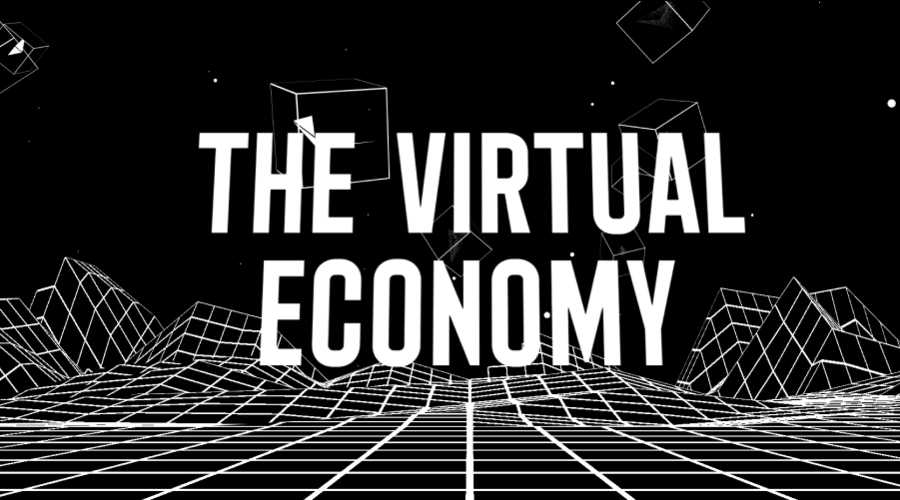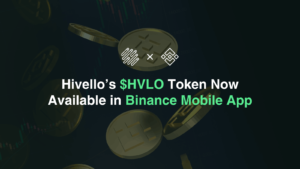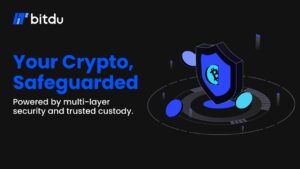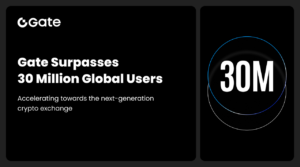
NFTs Transforming Gaming & Virtual Economies
NFTs, or non-fungible tokens, are unique digital assets that can represent ownership or proof of authenticity of a particular item. Unlike cryptocurrencies such as Bitcoin or Ethereum, NFTs are indivisible and cannot be exchanged on a one-to-one basis. Each NFT possesses distinct characteristics, making it different from any other token. This uniqueness has opened up exciting possibilities in the gaming industry.
Overview of Gaming and Virtual Economies
Gaming has evolved into a massive industry, encompassing various genres and platforms. Virtual economies have emerged within these games, allowing players to buy, sell, and trade in-game items, currencies, and even virtual real estate. These economies have often been constrained by centralized control and limited ownership rights, but non-fungible tokens have unleashed a new era of decentralized ownership and economic empowerment for gamers.
NFTs in Gaming: Enhancing Ownership and Collectibles
One of the significant advantages of non-fungible tokens in gaming is the concept of true ownership. Previously, players would spend countless hours earning rare and valuable items, only to have them confined within the boundaries of a game. With non-fungible tokens, gamers can now own their virtual assets outside the game environment. This ownership extends beyond a single game and allows players to transfer, sell, or even display their NFTs in various virtual marketplaces.
Moreover, NFTs have revolutionized the concept of collectibles in gaming. Players can now own limited edition or unique items that hold inherent value due to their scarcity or significance within the gaming community. These collectible non-fungible tokens often appreciate in value, creating new opportunities for gamers to invest and profit from their in-game pursuits.
Play-to-Earn: Empowering Gamers with NFTs
Another transformative aspect of non-fungible tokens in gaming is the concept of play-to-earn. Traditionally, gamers would invest time and effort into a game without any tangible returns. However, with the integration of non-fungible tokens, players can earn valuable assets and currencies that hold real-world value. This economic paradigm shift enables gamers to monetize their skills, creating opportunities for professional gamers and leveling the playing field for enthusiasts.
Play-to-earn models leverage blockchain technology to reward players with non-fungible tokens for their achievements, in-game contributions, or participation in decentralized autonomous organizations (DAOs). These NFTs can be sold, traded, or utilized within the game or across multiple gaming platforms, empowering players to earn a living or supplement their income through gaming.
Virtual Real Estate and NFTs
Non-fungible tokens have unlocked new dimensions within virtual worlds, including the ownership and trading of virtual real estate. Virtual lands, buildings, and spaces can now be represented by non-fungible tokens, granting players complete ownership and control over these digital properties. This concept has given rise to virtual real estate markets, where investors can acquire and develop virtual properties, much like in the real world.
Virtual real estate presents opportunities for players to create and monetize their virtual experiences. From hosting events and virtual gatherings to showcasing unique creations, the value of virtual real estate extends beyond mere ownership, enabling players to participate actively in the evolving virtual landscape.
NFT Marketplaces and Gaming Platforms
The emergence of non-fungible tokens marketplaces and gaming platforms has provided a fertile ground for the growth and exchange of digital assets. These platforms serve as the bridge between gamers, collectors, and artists, facilitating the buying, selling, and trading of non-fungible tokens. Marketplaces like OpenSea, Rarible, and NBA Top Shot have gained immense popularity, offering a wide range of digital collectibles, artwork, and gaming-related assets.
Gaming platforms are also incorporating non-fungible tokens into their ecosystems, allowing players to seamlessly integrate their non-fungible tokens assets into various games. This interoperability enables gamers to utilize their non-fungible tokens across different gaming experiences, unlocking new possibilities and enhancing the overall gaming experience.
Challenges and Opportunities of NFTs in Gaming
The integration of non-fungible tokens (NFTs) into the gaming industry brings forth both challenges and opportunities that shape the future of gaming and virtual economies. While non-fungible tokens offer exciting possibilities, it is important to consider the obstacles and potential benefits they present.
Challenges:
- Environmental Impact: The use of blockchain technology, which underlies non-fungible tokens, requires significant energy consumption. This raises concerns about the environmental impact of non-fungible tokens and the carbon footprint associated with their creation and transactions. Finding sustainable solutions and exploring eco-friendly blockchain alternatives are essential.
- Volatility and Speculation: non-fungible tokens markets can be highly volatile, with prices fluctuating dramatically. This poses risks for investors, collectors, and gamers who wish to participate in the market. Navigating this volatility requires careful consideration and understanding of market dynamics to mitigate potential financial risks.
- Lack of Regulation and Security: The non-fungible tokens space is still relatively new and lacks comprehensive regulation. This absence of clear guidelines can result in fraudulent activities, scams, and issues surrounding intellectual property rights. Implementing robust security measures, industry standards, and regulatory frameworks is crucial to protect both creators and consumers.
Opportunities:
- Empowering Independent Artists and Creators: non-fungible tokens provide a decentralized platform for artists and creators to showcase and monetize their work directly. By tokenizing digital art and game assets, artists can reach a global audience, establish ownership, and receive fair compensation for their creations. This empowers independent creators and fosters a more diverse and vibrant artistic community.
- Enhancing Ownership and Digital Rights: With non-fungible tokens, gamers can truly own their in-game items, extending ownership beyond the confines of a single game. This ownership enables players to trade, sell, and display their non-fungible tokens assets across various platforms and marketplaces. NFTs also introduce verifiable scarcity and provenance, giving players a unique sense of ownership and value.
- New Revenue Streams and Play-to-Earn Models: non-fungible tokens have facilitated the emergence of play-to-earn models, where gamers can earn valuable assets and currencies through their gameplay achievements. This allows players to monetize their skills, providing new opportunities for professional gamers and creating a more inclusive gaming ecosystem.
- Fostering Stronger Player Communities: NFTs encourage community engagement and collaboration. Players can participate in decentralized autonomous organizations (DAOs), influence game development decisions, and contribute to the evolution of virtual worlds. non-fungible tokens also foster social connections among players through the trading, gifting, and sharing of digital assets, strengthening player communities and enhancing the overall gaming experience.
NFTs and Virtual Economies: Impact on Artists and Creators

The integration of non-fungible tokens in gaming has given artists and creators a unique platform to showcase and monetize their work. Digital artists can tokenize their artwork, creating limited editions or unique pieces that can be bought, sold, or licensed through non-fungible tokens marketplaces. This decentralized approach provides artists with direct access to a global audience and the opportunity to earn a fair share of the value generated by their creations.
Additionally, game developers can leverage non-fungible tokens to incentivize and reward community contributions. By minting unique in-game items or characters as non-fungible tokens, developers can foster a sense of ownership and engagement among players, leading to a more vibrant and loyal community.
NFTs and the Future of Gaming
- Ownership and Authenticity: One of the key advantages of NFTs in gaming is the concept of true ownership and authenticity. With NFTs, gamers can have verifiable proof of ownership for their in-game items, characters, and virtual assets. This ownership is recorded on the blockchain, ensuring transparency and preventing unauthorized duplication or theft. NFTs provide gamers with a new level of control and the ability to trade or sell their digital possessions outside of the game ecosystem.
- Play-to-Earn Opportunities: NFTs have unlocked the potential for play-to-earn models, where gamers can monetize their skills and time invested in games. Through play-to-earn, players can earn valuable NFTs or cryptocurrencies by achieving in-game milestones, participating in tournaments, or completing specific tasks. This paradigm shift allows gamers to transform their passion into a source of income, creating new economic opportunities within the gaming community.
- Dynamic Virtual Economies: The integration of NFTs has led to the development of dynamic virtual economies within games and metaverses. These economies enable players to buy, sell, and trade NFTs representing unique in-game items, virtual real estate, and even artwork. As these economies evolve, they foster vibrant player communities, where users can engage in commerce, collaboration, and social interaction. NFTs fuel the growth of virtual economies by providing scarcity, value, and a sense of ownership.
Conclusion
The advent of NFTs has unleashed a new era of possibilities for gaming and virtual economies. These unique digital assets have transformed the way gamers own, trade, and monetize their in-game items and experiences. From enhancing ownership and collectibles to empowering play-to-earn models, NFTs have opened up new economic opportunities and fostered a more inclusive and immersive gaming environment.
As NFTs continue to gain traction, it is crucial for gamers, investors, and creators to navigate this rapidly evolving landscape with caution. Understanding the risks and opportunities associated with NFTs will be essential in maximizing the potential of this transformative technology.
FAQs
- What are NFTs?NFTs, or non-fungible tokens, are unique digital assets that represent ownership or authenticity of a particular item, often used in gaming and digital art.
- How do NFTs work in gaming?NFTs in gaming enable players to truly own their in-game items and trade or sell them outside the game environment, creating new economic opportunities.
- Can I make money with NFTs in gaming?Yes, through play-to-earn models and the trading of valuable NFT assets, gamers have the potential to earn real-world income through their gaming activities.
- Are non-fungible tokens only limited to virtual items?No, non-fungible tokens can represent a wide range of assets, including virtual real estate, artwork, collectibles, and more.
- What are the risks of investing in NFTs?non-fungible tokens investments carry risks such as market volatility, environmental concerns related to blockchain technology, and the potential for scams or fraudulent activities. It’s important to do thorough research and exercise caution when investing in non-fungible tokens.
I have worked in the cryptocurrency industry for over 5 years and have written numerous articles on the subject. I am well-versed in all aspects of cryptocurrencies and blockchain technology, and am an expert in the field.








